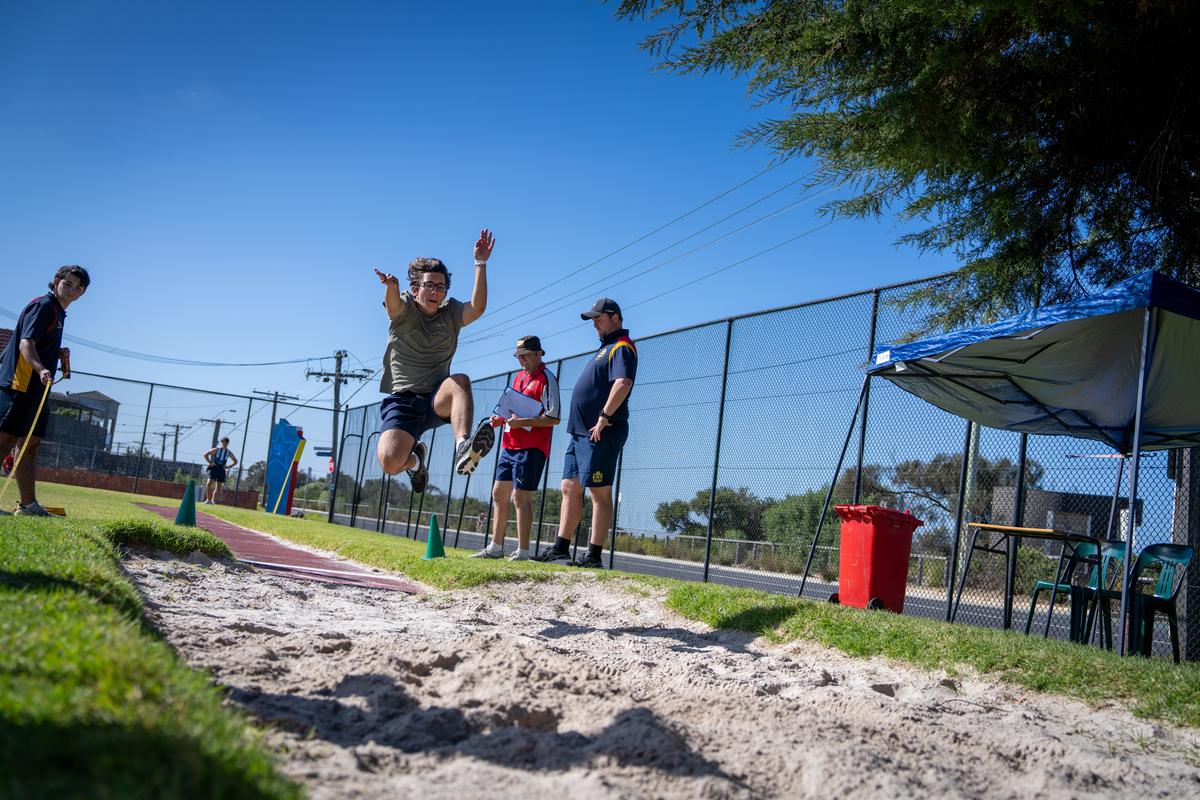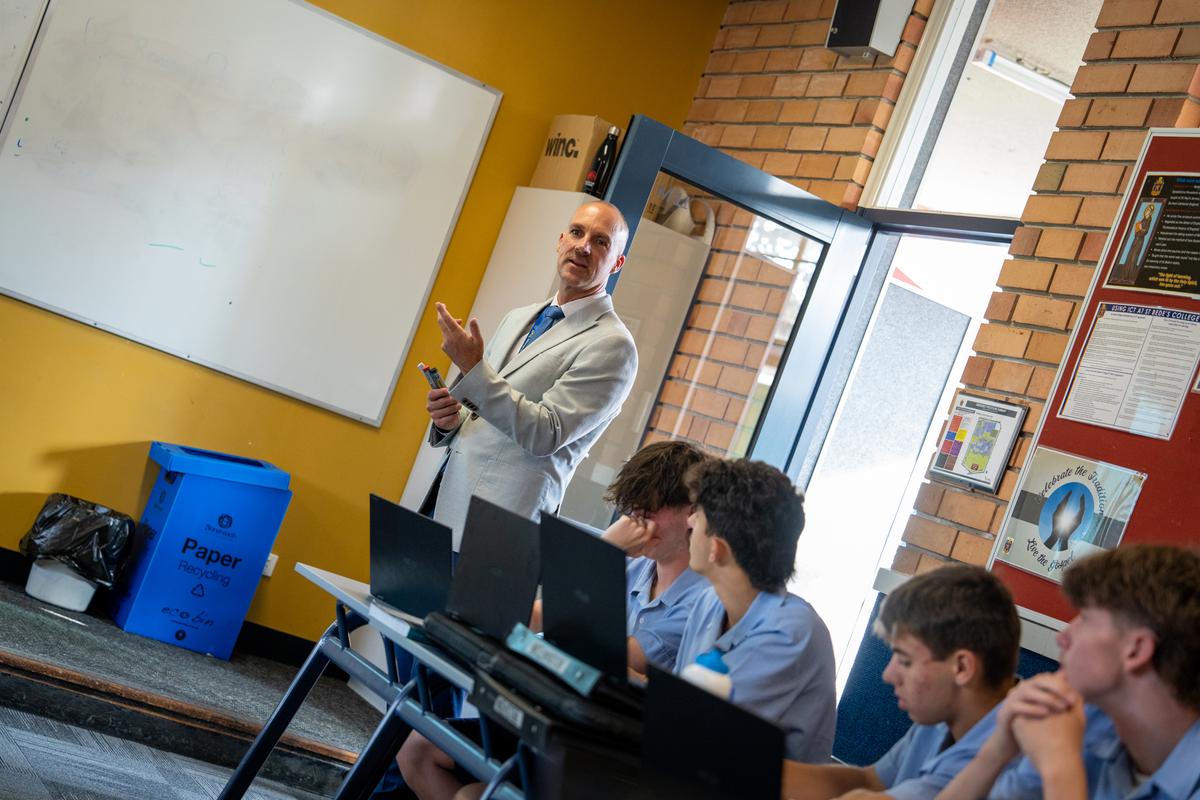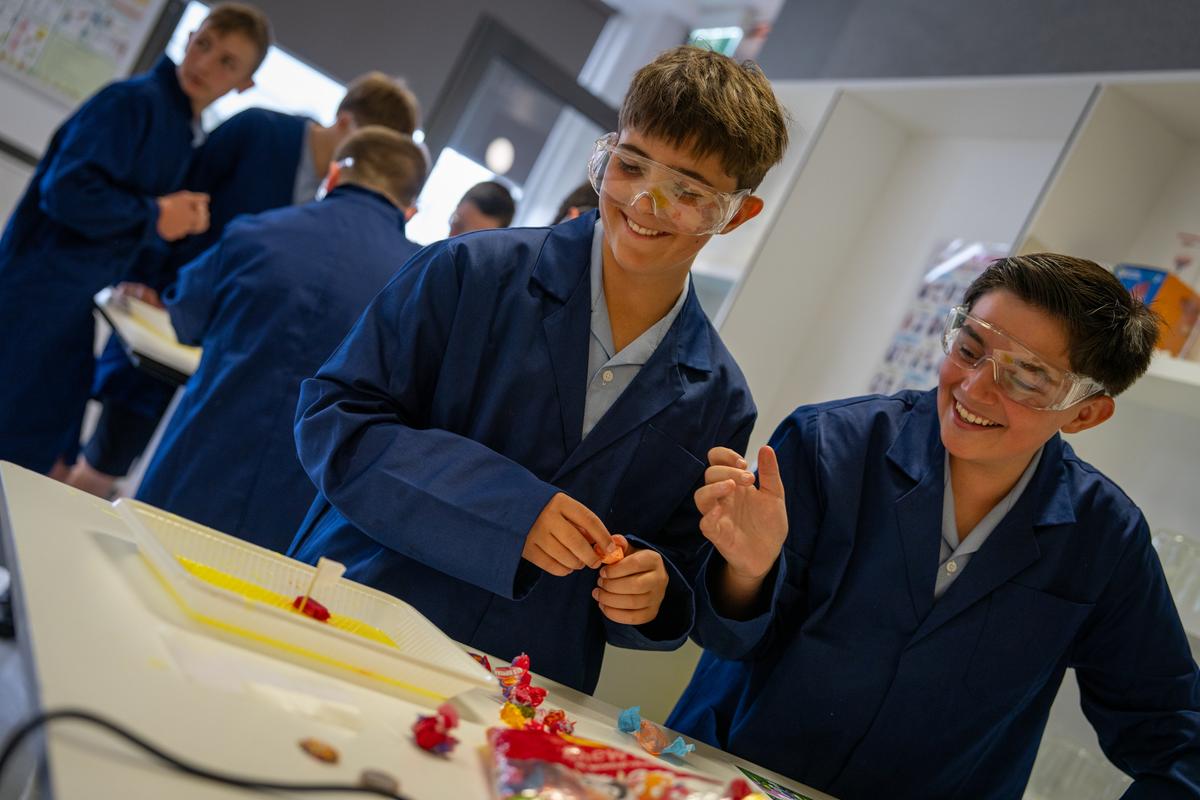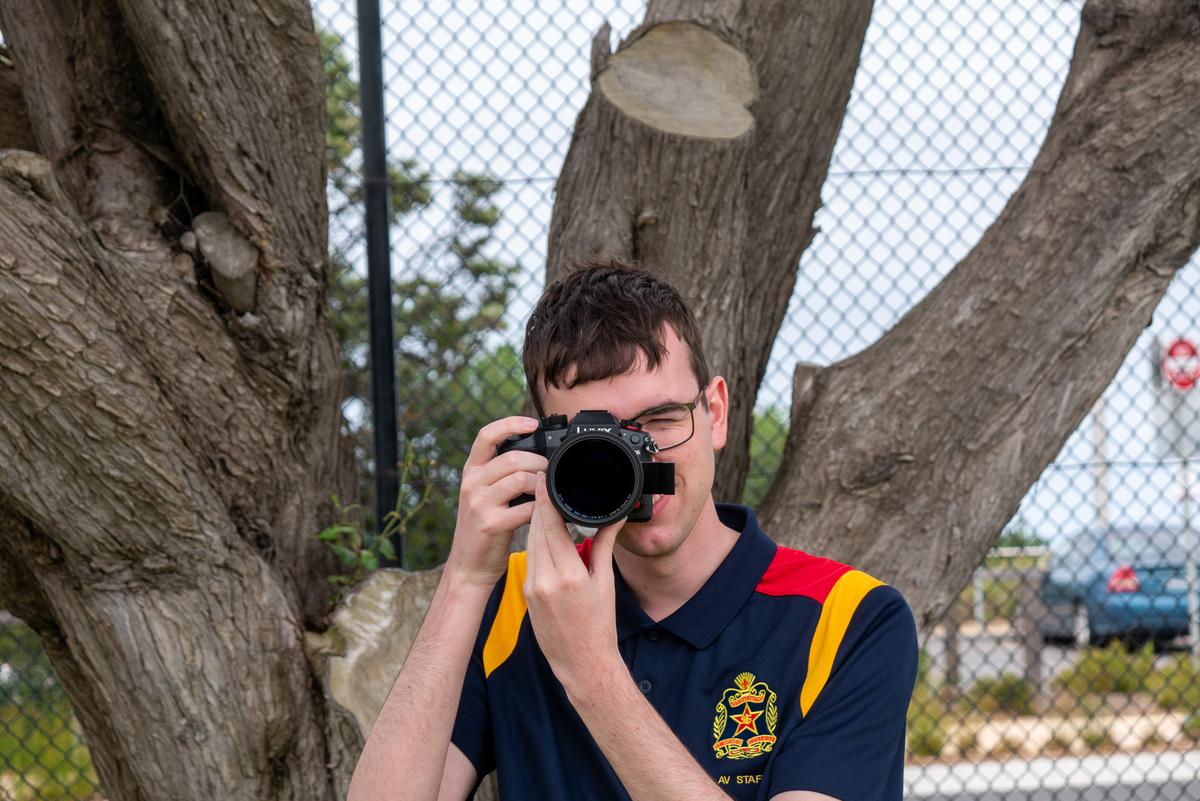Principal's Update
Per Vias Rectas

Principal's Update
Per Vias Rectas
While we have all been longing for the hot weather to really arrive, we did not wish it for the two days of our scheduled Senior and Junior House Athletics. Fortunately, the days later that week were far more conducive to supporting our Houses.
These two event days were once again great exemplars of our Beda community and the capacity to compete within the spirit of friendship and humour. Well done to our House Leaders—students and staff - on setting the high standards of spirit and to all competitors for giving their best.
































Best wishes to all who are representing the College at next week's ACC Athletics Carnival.
It is wonderful to see such a groundswell of support and community for those within our Beda and Lasallian community, with two incredible fundraisers.
Thank you to all who have supported the Fighting for Felix appeal on behalf of Felix Burgess, Class of 2023. Funds raised will allow Felix to access treatment options in the USA for his rare form of cancer—Ewing’s Sarcoma. You can make a donation here.
Stefan and Lachlan Lamble (Class of 2017 and 2019) departed Optus Oval in Perth on Sunday 11 February for their 3500km trek on foot across Australia in less than 100 days. Their efforts are to raise $100,000 for Australian Cancer Research Organisation ACRF as a tribute to their grandmother. You can follow their progress and support the cause at Lambros Army on YouTube.


As an accredited college with the International Boys’ School Coalition, we have access to excellent insight and the latest research focussing on how boys learn and how to best engage with them. Here are some valuable insights around connections, the strength of humour and valuing them each as individuals, and how we apply those insights to our teaching and learning at St Bede’s College.
Building Relationships
The need for staff to know, and interact with, our students outside the classroom.
“…[R]elationship is the very medium through which successful teaching and learning is performed.” Reichert and Hawley










Building relationships
Structuring our classrooms for success
Many people finish secondary school, never to return to the classrooms and hallways that played such a significant part in their educational journey. Then there are the passionate ones who do return – by choice! We are very proud to have 40 members of staff who are former students, or Old Collegians as they are known. Each of them come to work each day with a unique perspective on what it means to be a Beda Boy.
I caught up with our Audiovisual Leader, Thomas Hubeek (Class of 2017) to chat about his experience from student to staff.
Tell us about your role at St Bede’s College?
I am the Audiovisual Leader for the College. I look after a range of things, ensuring events run smoothly from a technical aspect, capturing College life through photos and video, and keeping on top of technology in the classroom, amongst my other responsibilities.
How long have you been on staff at St Bede’s College?
I became a full-time staff member in 2020, but previously took part in the AFL IT Traineeship in 2018.








Where did your career journey take you from school to eventually working here?
I completed Year 12 at the College in 2017, with my eyes set on enrolling at RMIT in a Live Production and Technical Services course. An opportunity came to work in the IT Department as part of a traineeship program offered by the AFL. I deferred my studies and completed the traineeship before moving on to university in 2019. Once I was in the home stretch of my course, I received a phone call from David Cracknell letting me know that there was an opening in the AV Department. I applied, got the job, and worked my way up from assistant to managing the department.
What is it like to work where you went to school?
I will never forget how strange it was to be calling teachers I had been seeing every school day for the last 6 years by their first name. I was straight out of Year 12 into the traineeship position, so it took some time to settle in and see how the College works from the other side of the fence.
Tell us something about your own experience as a student.
Since Year 7, I have been so invested in the College productions, having taken part in various technical roles every year from 2012 all the way up to the present year as a staff member, only missing one due to university commitments. That is 11 productions and counting! Now we move onto "Shrek the Musical," which is set to be the biggest and most technically involved production yet!
What is the biggest change since you were a student.
The biggest change would have to be the actual size of the College, taking on an additional campus. There are a lot more faces to remember now!
Having observed Ash Wednesday with the distribution of Ashes on 14 February, we have now moved into the Lenten period in the liturgical calendar of the Church year. I offer you the words of From the Ashes by Fr Andrew Hamilton, SJ.
“Ashes are a powerful symbol of humility and loss but they do not hold the last word as we journey to the glory of Easter. The symbolism of Ash Wednesday is strong and stark. In the Catholic Church it marks the beginning of Lent when churches traditionally change their appearance.
Vestments and altar cloths change from white or green to a sober purple. Statues are covered in purple and flowers disappear from the altar. Taken together with practices such as fasting and other acts of self-denial, they define Lent as a time of austerity. It fits naturally with austere and straitened times and moods in public life – with war, for example, bushfires, covid, political fecklessness and recession.


Ashes themselves are a powerful symbol. They are the remains of destruction by fire. They remind us of the loss of wealth, power, status or health that comes with age, defeat or social change. The bonfire of the vanities collapses into the ashes of loss.
In Catholic life the symbolism of ashes is made even more stark by association with the fires of hell and purgatory, with the history of the burning of heretics, martyrs and churches, and the bombing of Coventry, Dresden and Hiroshima.
Ashes remind us of the insecurity of lives, the transient glories of power, wealth and intelligence, the human capacity for savagery beneath a veneer of civilisation, the death and dissolution that come to all human beings, and the seriousness of the call to conversion. These are the themes of Lent.
Ashes are also a symbol of humiliation. In our culture, civilisation and elegance are often seen to begin with sweeping dust and ashes from houses and with removing them from our skin and clothing. A substantial part of our economy is based in producing cleanliness. As a result, we identify burned or scorch-marked clothing and a dirty skin as a sign with poverty, a lack of due self-care, or with human decline. To be dirty humiliates us. The word ‘humility’ comes from the Latin word for soil. It points to the bare, forked reality that we share with animals. In Christian terms it also reminds us of the weakness, betrayals and neglect that mark our lives, no matter how elaborately we create a self-image to conceal them. The humiliation of Lent is to recognise what and who we are, and to know that God loves and cares for us as we are. To leave ashes on our foreheads after Mass is a strong and challenging symbol.
Ashes are also a symbol of the seasonal regeneration that follows burning. After bushfires tree trunks remain black and leave marks on us if we brush against them. Green shoots, however, gradually emerge from ashes and sprout from blackened tree branches. In the forest death yields to life. hat, of course, is also the whole point of Lent. Its ashes do not have the last word. Life continues, regenerates, and spreads from the ashes. In the Christian story, the ash of bare and sinful humanity reflects the love that leads God to share the ashes of our life, the humiliation of dying naked on a cross, and to rise green from the ashes.
The ashes of Lent look forward to the green and spreading vine of Easter by which in Christ we are received into the happiness of the kingdom of God.”
Per vias rectas
Deb Frizza
Principal
We acknowledge the traditional custodians of this land, the Bunurong people of the Kulin Nation, whose ancient wisdom nurtured these lands and waters for millennia.